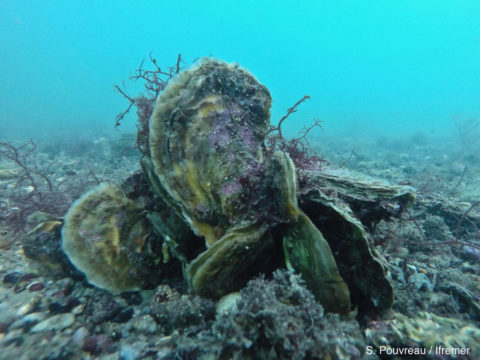With an estimated decline of 95% since the 19th century, native oyster reefs are one of the most threatened marine habitats in Europe. The key driver behind this huge decline is historic overfishing, however, habitat loss, disease, pollution and invasive non-native species are all contributors. Following a workshop on monitoring methods for oyster habitat restoration in December, a new workshop hosted by the Native Oyster Restoration Alliance (NORA) and the UK-Ireland Native Oyster Network was supported again by Wetlands International Europe. At this meeting, experts aimed to agree on Guidelines for biosecurity in European oyster restoration projects. The results of the latest workshop will underpin the Native Oyster Restoration Handbook, funded by the UK Environment Agency, and a stand-alone document on the Native Oyster Network and NORA website.
Guidelines for biosecurity in European oyster restoration projects
On 13 and 14 January 2020, the Native Oyster Restoration Alliance (NORA) and the Native Oyster Network co-hosted a workshop on Biosecurity in Oyster Restoration at the Heriot-Watt University, Edinburgh, Scotland. The workshop was supported by Wetlands International Europe, ZSL, the University of Portsmouth and the UK Environment Agency.
The workshop brought together 35 participants both in person and remotely from Germany, Denmark, France, Croatia, Netherlands, United States, Scotland, Ireland and England. The topics covered were the translocation of cultch and living oysters, as well as guidelines for maintaining biosecurity in hatchery systems. The potential risks and the importance of best practice were also explored.
Translocations of cultch and living oysters can never be risk free. Biosecurity practices have the potential to be a source of reputational risk and hindrance to the success of oyster restoration across Europe. Therefore, in the case of translocation, the first recommendation is to consider if it is really necessary. If yes, the donor locations should be as geographically close to the receiving water body as possible. Movement across latitudes should be avoided to reduce the possibility that diseases are moved from environments in which they are not pathogenic, to environments where they will have impacts.
In the case of cultch, recommendations were focused on reducing the need to import cultch where possible, and to follow good cultch weathering practice where not, and with final recommendation that the cultch must be screened to ensure that the shell is clean.
The final agreed protocols will be published in November 2020, both as a stand-alone document on the Native Oyster Network and NORA website, and as a chapter in the Native Oyster Restoration Handbook. A more extensive workshop report can be read on NORA’s website.
Header image: Dr Bill Sanderson retrieving an oyster from the Dornoch Firth for the Glenmorangie DEEP project ©️ DEEP
This workshop received financial support from the European Union. The contents are the sole responsibility of the organizers and can in no way be taken to reflect the views of the European Commission.


